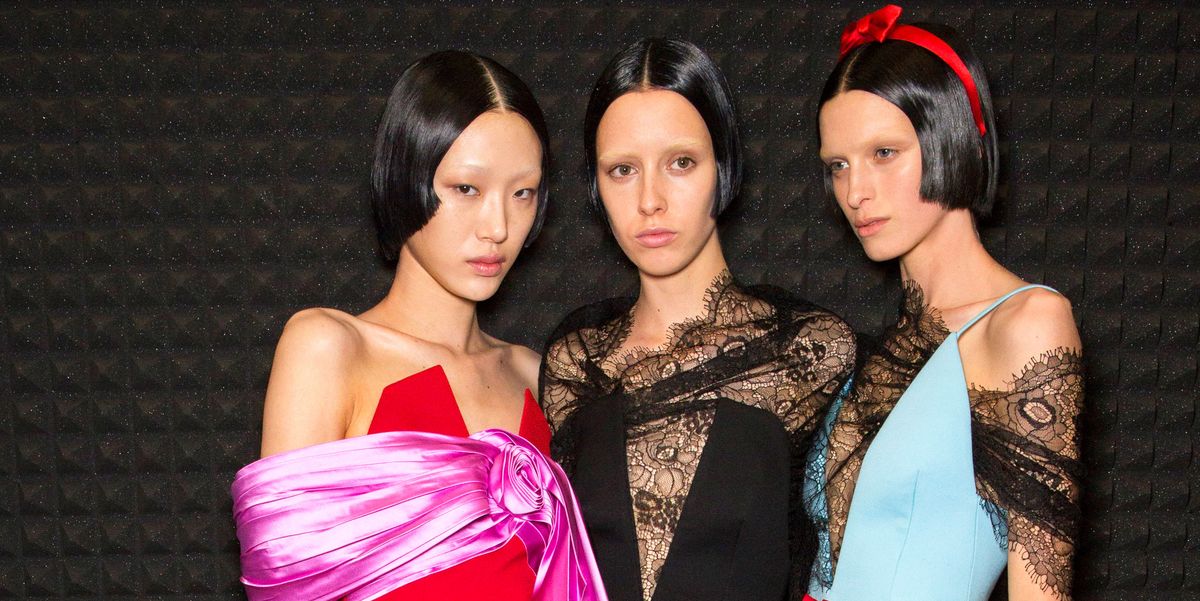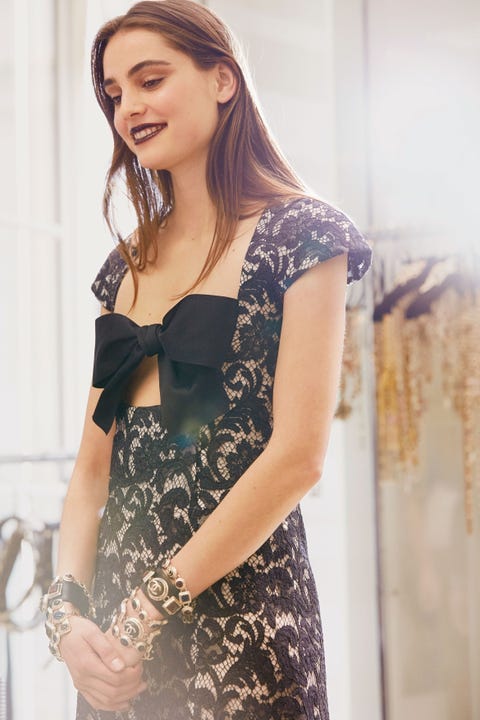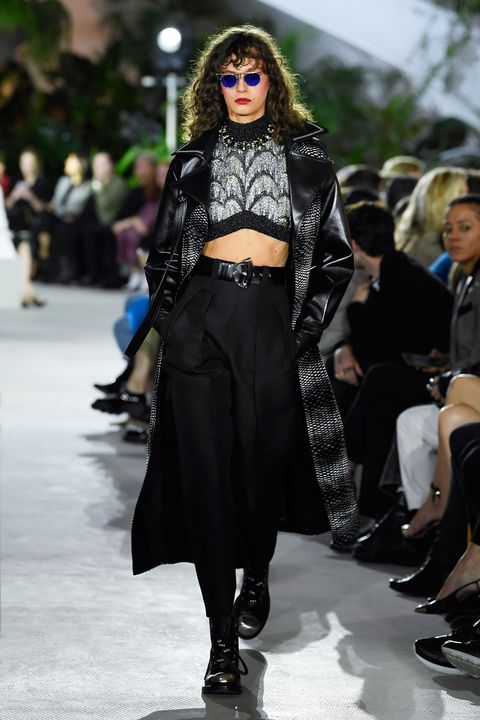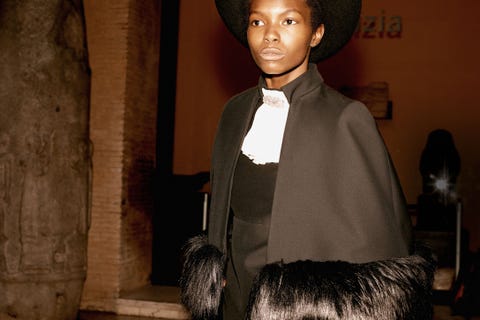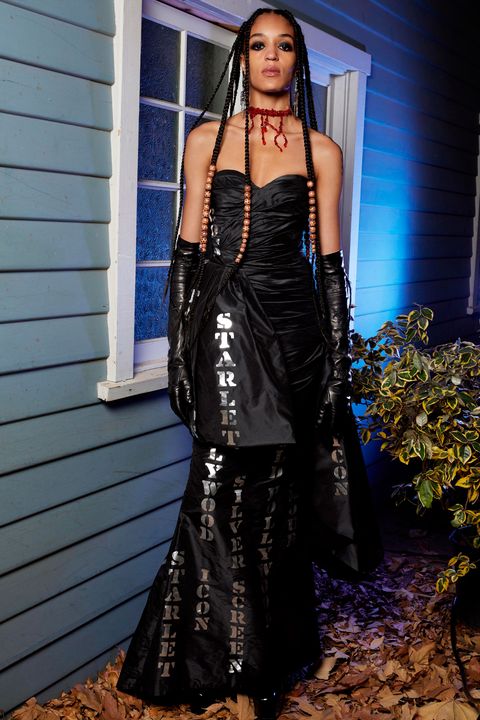It’s a truism that, in fashion, everything old is new again. But how, exactly, are we supposed to incorporate elements of bygone styles without accidentally lurching into a kind of clumsy costume? This was the concern of the wildly popular women’s magazine The Lady’s Book in 1830, which advised readers that when “attempting to engraft any part of the attire of olden times upon modern styles…much discretion and judgment are required.” The writer went on to caution, “We should not snatch, but select.” This voice—reasoned, sophisticated—warns against the excesses of unbridled enthusiasm, and it seems to have been heeded recently as designers have turned for inspiration to goth, a youth-associated subculture not exactly famous for its restraint.
For the resort 2020 season, designers never snatched, but selected, from a range of gothic tropes in a way that felt less Lydia Deetz and more adulting-appropriate. At Louis Vuitton, there was Nicolas Ghesquière’s interpretation of the subculture’s mid-’80s heights—black pinstripes narrowly skimming a wasp waist, with power shoulders wilting to expose the mortal frame beneath—and at Gucci, an austere, ankle-covering black dress with luxurious ebony faux-fur trim. The latter look could easily have met with the approval of Sarah Josepha Hale, who became editor of the renamed Godey’s Lady’s Book in 1837—and who, after the death of her husband, wore only black dresses offset with a white collar, in part to display her lifelong grief, and in part because she knew it was a combination in which she looked stunning.
Goth style has always time-traveled. An offshoot of punk, it morphed in the late 1970s and early ’80s from safety pins and neon mohair sweaters to a sampling of eighteenth- and nineteenth-century styles including lace, corsets, and Victorian mourning attire. (Entropic effects on black tights also made frequent appearances.) My own teen encounters with the look occurred during the ’90s reign of Hot Topic mall goths, an era Jeremy Scott gleefully—and a good deal less restrainedly—celebrates in his Moschino collection, an exuberant gathering of Halloween kitsch that will likely make traditional goths groan. Less partisan viewers, however, may find themselves delighted by the spider-webbed gowns and Frankenstein-stitched denim. The platform boots, meanwhile, have inspired me to buy my first pair of mondo creepers since 1999.
Perhaps we could say that, in 2019, goth likes to play with lightness in the dark. That’s certainly the case for up-and-coming designer Michelle Duncan, who juggles designing her goth-imbued line, Duncan, with her full-time job at Estée Lauder. Duncan says the best-selling item from her debut collection was the Exploding Heart dress, a pointed-
collar piece with a blaze of “bleeding” red beads and sequins spreading across the wearer’s heart and right sleeve—for the Siouxsie and the Banshees fan hiding in the C-suite. Her definition of goth includes touches of whimsy. “If you don’t have a sense of humor,” she says, “if we all take ourselves so seriously, then what’s the point?”
Goth’s perennial return sometimes prompts speculation on our current moment and why fashion is taking a turn toward the morbid. Given the style’s ubiquitous runway appearances, it might not tell us much about the present, but rather about the repetitive patterns of clothes and moods we have worn along the way. Here we are, dying again, stitching ourselves back together. Goth is quite literally not of the present; it’s what we dig up, again and again, from pasts both real and imagined.
This article appears in the December 2019 issue of ELLE.
